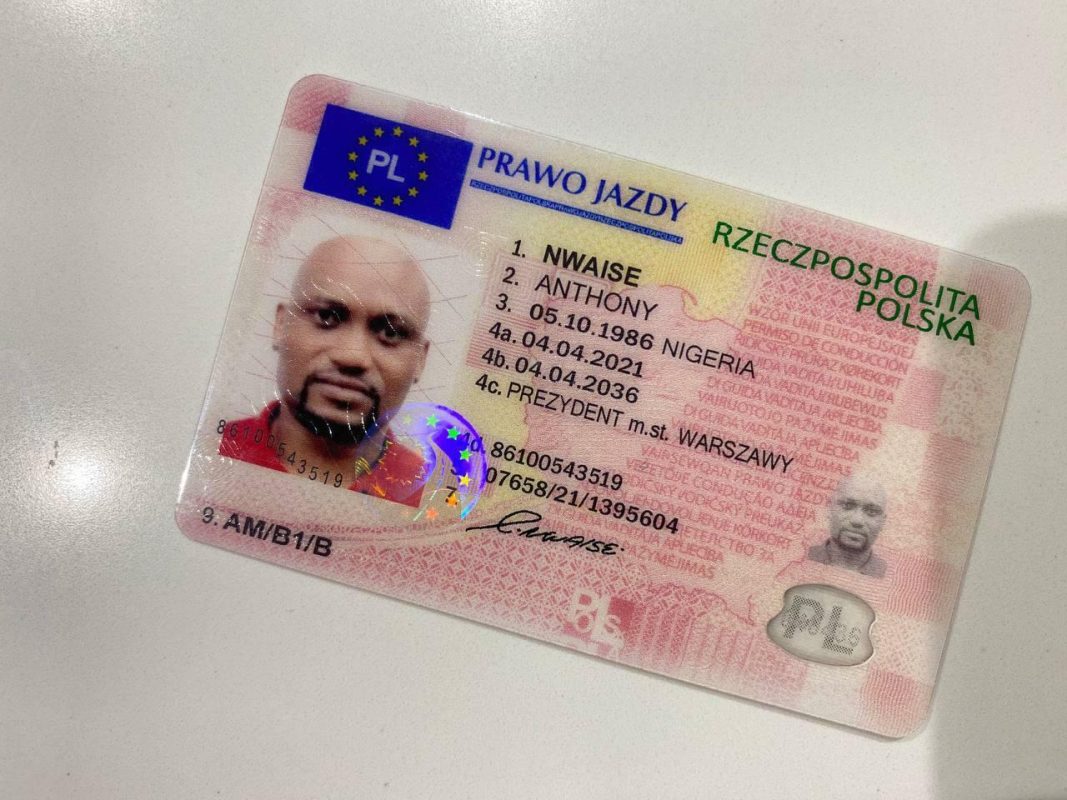14 Cartoons About Driving License C+E That Will Brighten Your Day
페이지 정보

본문
Obtaining a Driving Licence C+E
The most complete HGV license is C+E. This licence allows you to drive an HGV that has a semi-trailer or trailer weighing more than 750 kilograms.
 The course for Category CE is an natural progression from the course leading to Category prawo jazdy kat c. It includes driving on roads with various traffic density and on training tracks.
The course for Category CE is an natural progression from the course leading to Category prawo jazdy kat c. It includes driving on roads with various traffic density and on training tracks.
Requirements
A driving licence is an official document that proves that a driver has fulfilled the legal requirements for driving. The requirements vary from one country to the next however, they all require passing the driving test and not having any traffic violations recorded. The tests are typically divided into two parts: the theory and practical. However, there are exceptions. The first step to get a driver's license is completing the driving course and passing the theory test. The driver must be physically fit enough to drive, and certain countries require evidence of this, such as an exam for medical conditions.
The next step is obtaining the Category C license, also known as a the driver's license for cars. This allows you use trailers, passenger vehicles, and trucks up to 7.5 tons. If you already have a Cat C licence, you can upgrade to a Category C + E license, which permits you to drive articulated heavy goods vehicles with a maximum weight of 44 tonnes.
You must be at least 21 years old to get a Category C license. This is the minimum age requirement. However, you may be eligible to obtain one earlier if already completed or are currently undergoing the training for the Driver Certificate of Professional Competence. You must also have an official driving license to be eligible for the category C+E license.
The C+E driving licence is the highest hgv category available. The C+E license combines the categories C and E and is the most comprehensive HGV licence available. You must hold a Category prawo jazdy kat c license to be eligible for a C+E licence. You must also pass a driving test and a medical exam.
In addition to passing the theory and practical driving exams You must also pass a medical checkup and eye exam. The medical examiner will check for diseases such as diabetes and heart disease, in addition to other conditions. You must also be mentally fit to operate a vehicle and you should have no history of substance abuse. If you do have a mental health problem then the DVLA will consider your application on a case-by basis.
Training
If you're looking to become a truck driver and earn more money, then the best option is to get trained on the job. Several companies offer complete driver training classes. They will instruct students on how to drive rigid or articulated heavy goods vehicles that weigh up to 32 tonnes. The training is a combination of classroom instruction and driving tests on the road. The driving test is typically around 1.5 hours and involves following a specific route. The examiner will provide you with any directions or deviations.
After the course is completed, the student is issued a learner's licence (LL) that is valid for six months. The LL allows people to drive on public roads as long they have a licenced driver with them. Driving without a trained instructor is considered to be an offence.
The student will be awarded an award upon completion of the course at an approved driving academy. This certificate must then be presented to the Vehicle Inspection Officer when applying for a driver's licence. The VIO will conduct a driving test to ensure that the applicant is ready to drive the category C+E lorry.
The VIO will issue a permanent license after the driving test has been completed successfully. The license will include details about the driver, such as his name, prawo jazdy na skuter father's name, B1 ile kosztuje prawo jazdy na skuter? Jazdy (Https://Morphomics.Science/Wiki/A_HowTo_Guide_For_Buy_A_Driving_License_A_A1_A2_Without_A_Test_From_Start_To_Finish) date of birth, address, vehicle types, emergency contact information, blood group fingerprint impression, and photograph. The driver must also pass a medical examination before the license is issued.
The license must be updated every three years. This is usually followed by a document called a "vremennoe-razreshenie". This document proves that the driver has been through an examination to make sure that he's fit to drive. Drivers are also required to attend first aid courses in order to be prepared for possible accidents on the road. Depending on where you live the driver might need to get an additional endorsement in order to drive passenger vehicles. These endorsements are known as commercial drivers licenses (CDL). These endorsements are required for drivers who need to transport dangerous materials.
Exams
To get your license, you need to pass both a written test as well as a driving test. The written test consists of 20 questions and you must be able to answer at a minimum 14 of them. The questions are based off of the information in Chapters 4 through 11 of the NYS Driver's Manual. To prepare for the test, read the manual and take practice tests. It is important to take your time during the test and to not rush through the questions.
The driving test consists of the demonstration of basic vehicle control including slope starting (for manual transmission vehicles) as well as backing up and an obstacle course. The examiner will also evaluate your ability to respond quickly to roadside emergency situations. In addition, the examiner will verify that the vehicle you are using is properly insured. During the driving exam, prawo jazdy na skuter you cannot have any passengers other that your interpreter or sponsor. You are not allowed to use any recording device unless it is approved by the examiner.
The oral and written tests are conducted at DVS offices in New York City, Westchester, Rockland, Nassau, Suffolk, Onondaga and Albany counties. Online scheduling is available, or applicants can visit their nearest DVS office. When scheduling an appointment, applicants are able to select the date and time they would like to test at. Candidates must present a valid driver's licence and proof of liability insurance to the DVS office. The written and oral exams are offered in English, Albanian, French, Hebrew, Italian, Korean, Russian and Spanish.
Before developing any exam, a comprehensive job analysis is conducted prior to the development of each exam. The job analysis entails observing incumbents, conducting interviews and surveys and also analyzing the current documents. A group composed of Subject Experts (SME's) is formed to review the job analysis and formulate the exam questions. The SME's are extensively trained in question writing techniques and are well-versed in the skills, knowledge, and capabilities required to complete the task in a satisfactory manner.
The written and oral exams are designed to be as close to real life as is possible. However, there are certain situations that could cause an examiner to deny you a license. This could be the case if you were driving erratically during the test and/or were involved in a crash; or if you have violated any traffic rules, regulations or laws; or if your vehicle was unsafe. You'll have to take your test again and pay additional fees if you violated any traffic laws, rules or regulations.
Medical examination
To be qualified to drive a lorry in the EU one must undergo an examination for medical reasons. This is conducted by a licensed doctor who examines the driver's general health and also their eyesight. A medical certificate allows drivers to obtain C+E driving licenses valid for five years. After that, the license will be renewed annually.
You must pass two tests to pass the driving test. One is a theory-based test, while the other is a practical test. The test based on theory has 25 questions, which you have to complete in less than 8 minutes. The practical test consists of driving around a restricted area and demonstrating your capability to drive safely. Throughout the test you will be observed and accompanied by an examiner.
The test could last up to one hour and includes both an oral and driving portion. You have to follow the directions of the examiner and pay carefully to them. You'll be required to execute various maneuvers, such as changing lanes or overtaking, as well as parking. In addition, you have to demonstrate your ability to observe the signs and signals on the road. You also have to follow a specific route, which will be provided by the examiner.
Some commenters have questioned the use of the term "not-certified." The final rule uses the term "not-certified" to avoid any implication an CDL driver does not have medical qualifications. This phrase clarifies that the driver's privileges to drive are not being revoked due to the FMCSA's reprehensible actions. The final rule requires that the State-designated licensure authority (SDLA) will post the medical certification status of the CDL holders on their CDLIS driver record. This will prevent fraudulent and prawo jazdy Na skuter false claims that an individual who holds a CDL is medically qualified, when in reality, they aren't. To further discourage fraud and fraud, the SDLA must include the contact information of the ME who conducted a medical examination in the driver's file. This requirement will remain in place until FMCSA releases new rules to deal with this issue. In the meantime, motor carriers may keep an original or a copy of the medical examiner's certification in their driver qualifications files as evidence that the driver is medically certified provided that the carrier can prove the receipt date of the certificate from the ME.
The most complete HGV license is C+E. This licence allows you to drive an HGV that has a semi-trailer or trailer weighing more than 750 kilograms.
 The course for Category CE is an natural progression from the course leading to Category prawo jazdy kat c. It includes driving on roads with various traffic density and on training tracks.
The course for Category CE is an natural progression from the course leading to Category prawo jazdy kat c. It includes driving on roads with various traffic density and on training tracks.Requirements
A driving licence is an official document that proves that a driver has fulfilled the legal requirements for driving. The requirements vary from one country to the next however, they all require passing the driving test and not having any traffic violations recorded. The tests are typically divided into two parts: the theory and practical. However, there are exceptions. The first step to get a driver's license is completing the driving course and passing the theory test. The driver must be physically fit enough to drive, and certain countries require evidence of this, such as an exam for medical conditions.
The next step is obtaining the Category C license, also known as a the driver's license for cars. This allows you use trailers, passenger vehicles, and trucks up to 7.5 tons. If you already have a Cat C licence, you can upgrade to a Category C + E license, which permits you to drive articulated heavy goods vehicles with a maximum weight of 44 tonnes.
You must be at least 21 years old to get a Category C license. This is the minimum age requirement. However, you may be eligible to obtain one earlier if already completed or are currently undergoing the training for the Driver Certificate of Professional Competence. You must also have an official driving license to be eligible for the category C+E license.
The C+E driving licence is the highest hgv category available. The C+E license combines the categories C and E and is the most comprehensive HGV licence available. You must hold a Category prawo jazdy kat c license to be eligible for a C+E licence. You must also pass a driving test and a medical exam.
In addition to passing the theory and practical driving exams You must also pass a medical checkup and eye exam. The medical examiner will check for diseases such as diabetes and heart disease, in addition to other conditions. You must also be mentally fit to operate a vehicle and you should have no history of substance abuse. If you do have a mental health problem then the DVLA will consider your application on a case-by basis.
Training
If you're looking to become a truck driver and earn more money, then the best option is to get trained on the job. Several companies offer complete driver training classes. They will instruct students on how to drive rigid or articulated heavy goods vehicles that weigh up to 32 tonnes. The training is a combination of classroom instruction and driving tests on the road. The driving test is typically around 1.5 hours and involves following a specific route. The examiner will provide you with any directions or deviations.
After the course is completed, the student is issued a learner's licence (LL) that is valid for six months. The LL allows people to drive on public roads as long they have a licenced driver with them. Driving without a trained instructor is considered to be an offence.
The student will be awarded an award upon completion of the course at an approved driving academy. This certificate must then be presented to the Vehicle Inspection Officer when applying for a driver's licence. The VIO will conduct a driving test to ensure that the applicant is ready to drive the category C+E lorry.
The VIO will issue a permanent license after the driving test has been completed successfully. The license will include details about the driver, such as his name, prawo jazdy na skuter father's name, B1 ile kosztuje prawo jazdy na skuter? Jazdy (Https://Morphomics.Science/Wiki/A_HowTo_Guide_For_Buy_A_Driving_License_A_A1_A2_Without_A_Test_From_Start_To_Finish) date of birth, address, vehicle types, emergency contact information, blood group fingerprint impression, and photograph. The driver must also pass a medical examination before the license is issued.
The license must be updated every three years. This is usually followed by a document called a "vremennoe-razreshenie". This document proves that the driver has been through an examination to make sure that he's fit to drive. Drivers are also required to attend first aid courses in order to be prepared for possible accidents on the road. Depending on where you live the driver might need to get an additional endorsement in order to drive passenger vehicles. These endorsements are known as commercial drivers licenses (CDL). These endorsements are required for drivers who need to transport dangerous materials.
Exams
To get your license, you need to pass both a written test as well as a driving test. The written test consists of 20 questions and you must be able to answer at a minimum 14 of them. The questions are based off of the information in Chapters 4 through 11 of the NYS Driver's Manual. To prepare for the test, read the manual and take practice tests. It is important to take your time during the test and to not rush through the questions.
The driving test consists of the demonstration of basic vehicle control including slope starting (for manual transmission vehicles) as well as backing up and an obstacle course. The examiner will also evaluate your ability to respond quickly to roadside emergency situations. In addition, the examiner will verify that the vehicle you are using is properly insured. During the driving exam, prawo jazdy na skuter you cannot have any passengers other that your interpreter or sponsor. You are not allowed to use any recording device unless it is approved by the examiner.
The oral and written tests are conducted at DVS offices in New York City, Westchester, Rockland, Nassau, Suffolk, Onondaga and Albany counties. Online scheduling is available, or applicants can visit their nearest DVS office. When scheduling an appointment, applicants are able to select the date and time they would like to test at. Candidates must present a valid driver's licence and proof of liability insurance to the DVS office. The written and oral exams are offered in English, Albanian, French, Hebrew, Italian, Korean, Russian and Spanish.
Before developing any exam, a comprehensive job analysis is conducted prior to the development of each exam. The job analysis entails observing incumbents, conducting interviews and surveys and also analyzing the current documents. A group composed of Subject Experts (SME's) is formed to review the job analysis and formulate the exam questions. The SME's are extensively trained in question writing techniques and are well-versed in the skills, knowledge, and capabilities required to complete the task in a satisfactory manner.
The written and oral exams are designed to be as close to real life as is possible. However, there are certain situations that could cause an examiner to deny you a license. This could be the case if you were driving erratically during the test and/or were involved in a crash; or if you have violated any traffic rules, regulations or laws; or if your vehicle was unsafe. You'll have to take your test again and pay additional fees if you violated any traffic laws, rules or regulations.
Medical examination
To be qualified to drive a lorry in the EU one must undergo an examination for medical reasons. This is conducted by a licensed doctor who examines the driver's general health and also their eyesight. A medical certificate allows drivers to obtain C+E driving licenses valid for five years. After that, the license will be renewed annually.
You must pass two tests to pass the driving test. One is a theory-based test, while the other is a practical test. The test based on theory has 25 questions, which you have to complete in less than 8 minutes. The practical test consists of driving around a restricted area and demonstrating your capability to drive safely. Throughout the test you will be observed and accompanied by an examiner.
The test could last up to one hour and includes both an oral and driving portion. You have to follow the directions of the examiner and pay carefully to them. You'll be required to execute various maneuvers, such as changing lanes or overtaking, as well as parking. In addition, you have to demonstrate your ability to observe the signs and signals on the road. You also have to follow a specific route, which will be provided by the examiner.
Some commenters have questioned the use of the term "not-certified." The final rule uses the term "not-certified" to avoid any implication an CDL driver does not have medical qualifications. This phrase clarifies that the driver's privileges to drive are not being revoked due to the FMCSA's reprehensible actions. The final rule requires that the State-designated licensure authority (SDLA) will post the medical certification status of the CDL holders on their CDLIS driver record. This will prevent fraudulent and prawo jazdy Na skuter false claims that an individual who holds a CDL is medically qualified, when in reality, they aren't. To further discourage fraud and fraud, the SDLA must include the contact information of the ME who conducted a medical examination in the driver's file. This requirement will remain in place until FMCSA releases new rules to deal with this issue. In the meantime, motor carriers may keep an original or a copy of the medical examiner's certification in their driver qualifications files as evidence that the driver is medically certified provided that the carrier can prove the receipt date of the certificate from the ME.
- 이전글"Argentina - Player Of The Year" 25.02.28
- 다음글9 Lessons Your Parents Taught You About Tony Mac Driving Courses 25.02.28
댓글목록
등록된 댓글이 없습니다.




